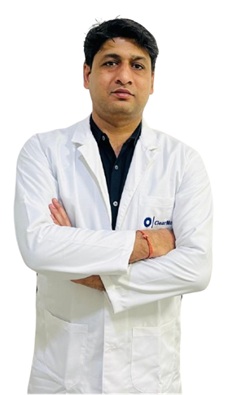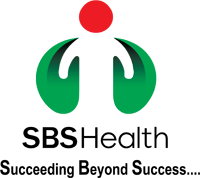Toe Nail Excision: Procedure, Benefits, Risks & Recovery
Dr. Aman Priya Khanna

Treatment Duration
15 Minutes
------ To ------30 Minutes
Treatment Cost
₹ 10,000
------ To ------₹ 25,000

You can check Toe Nail Excision Cost here.
Toe Nail Excision
Surgical excision of the nail plate, nail bed, and matrix. The surgical technique of lateral nail avulsion and Matricectomy has achieved the greatest success in the treatment of ingrown nails.
- Lateral nail excision limits the amount of nail removed, leaving less of an area of the exposed and tender nail bed.
- Ingrown toenail surgery is usually done as an outpatient procedure with a local anaesthetic.
- There are various surgical options for treating an ingrown toenail.
- An orthopaedic surgeon or podiatrist can recommend the right plan of action, but any relevant medical issues, such as a past of ingrown toenails, must be disclosed.
Expert Doctors (10)
NABH Accredited Hospitals (10)


Benefits of Toe nail excision
The Benefits of Toe Nail excision are a respite from
- Pain and discomfort

Who needs Toe Nail excission
- There are various surgical options for treating an ingrown toenail. An orthopaedic surgeon or podiatrist can recommend the right plan of action (any relevant medical issues, such as a past of ingrown toenails, must be disclosed to the doctor)
- Usually, an ingrown toenail does not require surgery however in cases where the toenail grows into the skin in such a manner that it leads to excruciating pain due to how the nail's edge extends into the toenail, surgery is required. Usually, the big toenail ends up having this issue as they are common to become ingrown.
- This issue is frequently caused by tight-fitting footwear or improper nail trimming.
- Ingrown toenails can heal on their own if the patient switches to wearing sandals or open-toed shoes. This helps reduce the pressure on the toe(s). You can also try soaking the toe in hot water and keeping the region clean.
- In case there are signs of infection it's advisable to go to a medical professional instead of trying home remedies.
- If an individual has a medical condition, such as diabetes, sciatica, or poor circulation, in case of ingrown toenails they should go to a medical professional instead of trying to fix it at home as they run the risk of potential bleeding.
- Ingrown toenails irritate the skin. Bacteria and other creatures may be able to get in more easily.
- This increases the risk of infection. If an ingrown toenail is treated quickly, the risk of infection is reduced
Toe Nail Excision procedure
Surgeries for grown Toenails include
- Ingrown toenail surgery is known as nail avulsion. This can be of two types:
- The most common kind is partial nail avulsion which involves the doctor removing a piece of a toenail to keep it from rubbing against the skin.
- In some situations, the entire toenail may have to be removed. This procedure is also known as a complete nail avulsion
- In extreme cases a surgery called Matrixectomy may have to be conducted; this is a procedure in which the toe itself is completely removed.
Toenail removal
- In most cases, the doctors will prefer to perform partial nail avulsion as removing the entire nail carries the possibility of the nail growing back malformed, which can subsequently again lead to ingrown toenails.
- After surgery, a nail can take months or years to fully regenerate.
- A physician may also perform surgery on the tip of the toe in rare cases where other therapies have been deemed inadequate or past procedures have failed to solve the issue permanently.
Matrixectomy or removal of toe
- This surgery is conducted in rare situations where the toenail is inflamed or infected, or if even after other procedures the nail has not been improving.
- This procedure is specifically done in cases where nail excision or wedges resection fails.
- It requires removing the toe as well as the nail.
- A doctor can do this to extract contaminated tissue.
- During this procedure, your doctor may also propose a tailored splint to prevent skin irritation.
Anaesthesia
- Both the procedures require the usage of anaesthesia.
- During the local anaesthesia, the patient is awake, but the physician numbs the surgical area surrounding their toe so they don't feel anything.
- In certain situations such as a procedure on an adolescent child, doctors use sedatives such as general anaesthesia or twilight anaesthesia during the surgery.
- On the usage of twilight anaesthesia, the person is awake but sluggish, and they may have problems remembering what transpired.
- General anaesthesia makes the patient unconscious, making it appropriate for those who have a strong aversion to surgery.
- The surgery may take much longer and require more planning if the patient requests general anaesthesia as one has to wait for the patient to fall asleep after first and after the procedure, the patient has to be kept under watch for about 2hrs
Recovery and Post Op care after Toe Nail excision
After ingrown toenail surgery, a person can assist in speeding up their recovery by:
- Soaking the feet in warm water is a wonderful suggestion.
- By using NSAID (nonsteroidal anti-inflammatory drug) and antibiotic ointment twice a day to help with pain and swelling.
- By avoiding strenuous activity that puts a strain on the wound until a physician approves.
- By wearing suitable fitting footwear that isn't too tight.
- By preventing picking on the injured area.
- In case of infection, keep your injuries heavily bandaged until it heals (which usually takes several weeks) and not pick on the injured area.
Risk and Complication of the Surgery
Risk and Complication
The following are some of the risks associated with removing an ingrown toenail:
1. Deformity - Toenails may regrow malformed or distorted. It won't regrow or won't reach its prior length in some circumstances.
2. Ingrown Toenail-Removal of one infected wound does not guarantee that a person will not acquire more ingrown toenails in the future. Another surgery, or perhaps numerous surgeries, may be required in some cases
Complication / Risk
The following are some of the risks associated with removing an ingrown toenail:
- Deformity - Toenails may regrow malformed or distorted. It won't regrow or won't reach its prior length in some circumstances.
- Ingrown Toenail - Removal of one infected wound does not guarantee that a person will not acquire more ingrown toenails in the future. Another surgery, or perhaps numerous surgeries, may be required in some cases.
- Infection after surgery - The patient may get infected after surgery.
- An open wound from surgery makes it easier for bacteria and other infections to infiltrate the body.
- If you have any signs of complications following surgery, you should see a doctor right away, because untreated infections can lead to severe toe injury or even amputation.
Anaesthesia / Complication -
- It includes difficulty waking up after general anaesthesia or a severe allergic reaction to local anaesthetic.
- Allergies are a very common occurrence. A patient may have an allergic response to surgical instruments. Allergies to latex should be reported to your doctor.
- Removal of one infected wound does not guarantee that a person will not acquire more ingrown toenails in the future. Another surgery, or perhaps numerous surgeries, may be required in some cases.
Infection after Surgery -
- The patient may get infected after surgery.
- An open wound from surgery makes it easier for bacteria and other infections to infiltrate the body.
- If you have any signs of complications following surgery, you should see a doctor right away, because untreated infections can lead to severe toe injury or even amputation.
Anaesthesia and complication -
- It includes difficulty waking up after general anaesthesia or a severe allergic reaction to local anaesthetic.
- Allergies are a very common occurrence. A patient may have an allergic response to surgical instruments. Allergies to latex should be reported to your doctor.
More Treatment options
Last Updated on: 7 February 2025
Reviewer

Dr. Aman Priya Khanna
MBBS, DNB General Surgery, Fellowship in Minimal Access Surgery, FIAGES
14 Years Experience
Dr Aman Priya Khanna is a well-known General Surgeon, Proctologist and Bariatric Surgeon currently associated with HealthFort Clinic, Health First Multispecialty Clinic in Delhi. He has 14 years of experience in General Surgery, Proctolo...View More
Author

She has extensive experience in content and regulatory writing with reputed organisations like Sun Pharmaceuticals and Innodata. Skilled in SEO and passionate about creating informative and engaging medical conten...View More
Latest Health Articles























